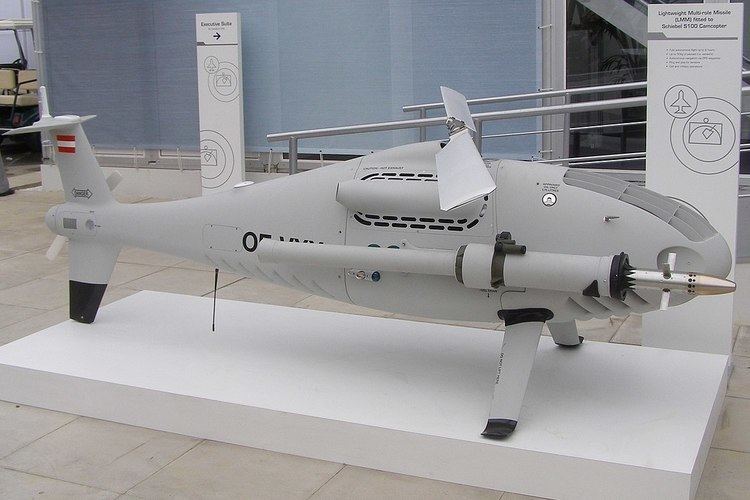Place of origin United Kingdom Used by Royal Navy Weight 13 kg (28.6 lbs) | In service 2015 Manufacturer Thales Air Defence | |
 | ||
Type Light Air-to-surface and Surface-to-surface missile | ||
The Lightweight Multirole Missile (LMM; previously known as FASGW(L)) is a lightweight air-to-surface and surface-to-surface missile under development by Thales Air Defence for the United Kingdom. The Ministry of Defence (MOD) has placed an initial order for 1,000 missiles and deliveries were due to start in 2013. The missile is known as Martlet in British service.
Contents
History
LMM was initially conceived as Thales' response to the MoD's Future Air-to-Surface Guided Weapon (Light) FASGW(L) requirement. LMM has been designed to be launched from a variety of naval, air and land platforms against a wide range of targets. High precision reduces collateral damage and makes the missile suitable for asymmetric littoral operations. Development began in 2008 and the LMM uses technology from an earlier Thales missile, the Starstreak. Qualification testing and initial production commenced in late 2011, following an initial contract by the UK Ministry of Defence in April 2011. Thales has conducted successful guidance control firings, including a semi-active laser (SAL) version.
The MoD contract includes the design, development and qualification of a laser beam rider version of LMM, together with production of an initial quantity of 1,000 missiles. These will be operated from the new Lynx Wildcat and Thales graphics have shown helicopters carrying twin 7 round launchers. These are due to enter service in 2015. The contract was funded by a deal to "re-role previously contracted budgets to facilitate the full-scale development, series production and introduction of the LMM." In other words, other contract(s) were cut and the funds switched to paying for LMM. The most likely contract affected is for the Starstreak, which is approaching the end of its term.
Thales have test-fired an LMM from a Schiebel Camcopter S-100, demonstrating a potential for use from unmanned aerial vehicles (UAVs).
Description
LMM is intended to provide a single family of weapons that can be used in different modes, including:
The LMMs in the initial batch use laser beam riding with infrared terminal homing and a laser proximity sensor, although a semi-active laser version is under development for precision surface attack roles.
FFLMM/Fury
In July 2014, Thales unveiled a modification of the LMM that turns it into a glide bomb, called the FreeFall LMM (FFLMM). Thales partnered with Textron to market it as the Fury for the U.S. market, who provides a height-of-burst sensor and electronic safe and arm device. The weapon had been in development for 18 months and undergone initial test drops in August 2013. In comparison to the LMM, the FFLMM removes the rocket motor and associated components while keeping the body and control actuators, as well as adding INS and GPS navigation, semi-active laser guidance in place of the beam-riding system, and four enlarged fins for increased lift.
The bomb is not intended to replace larger munitions, but be used as a smaller and cheaper alternative to self-propelled missiles, with three bombs able to fit on a single Hellfire missile rail. It is 70 cm (28 in) long, weighs 5.8 kg (12.7 lb), and uses a 2 kg (4.4 lb) dual-effect shaped charge and pre-fragmented blast warhead for use against armored vehicles, small boats, and personnel, with an operational range of 4 km (2.5 mi) when launched at 10,000 ft (3,000 m). A potential role for the Fury could be to arm medium intelligence, surveillance and reconnaissance (ISR) UAVs like the RQ-7 Shadow to deal with fleeting or time-sensitive targets. Thales is offering the weapon to meet the U.K. Defense Ministry’s Future Air-to-Surface Guided Weapon (Light) (FASGW (L)) requirement.
Operators
United Kingdom - 1,000 missiles on order (Expected to enter service in 2015)
